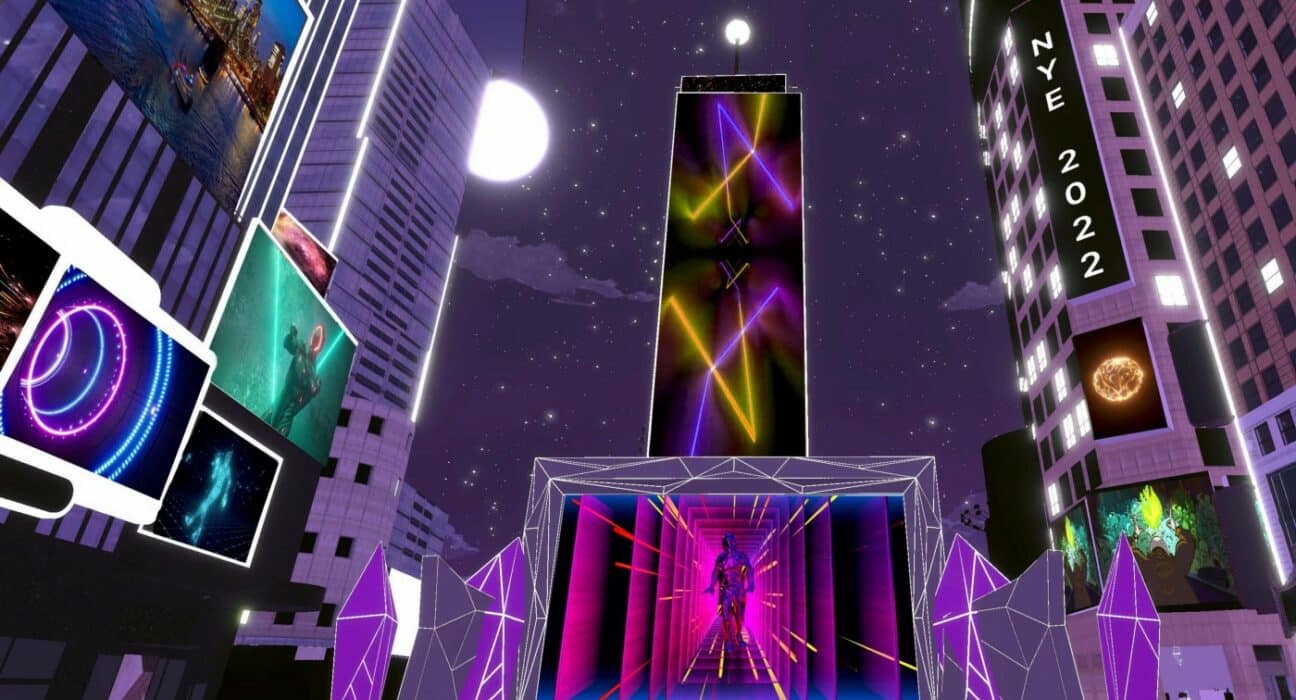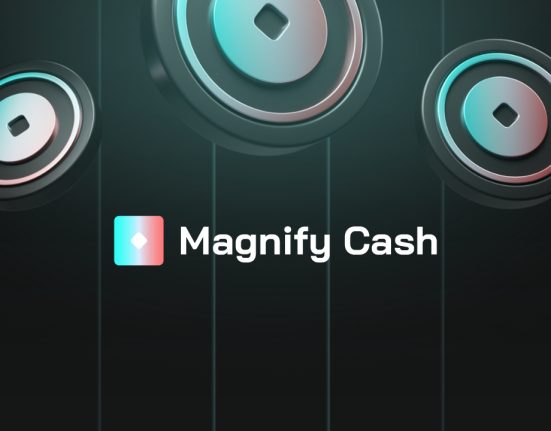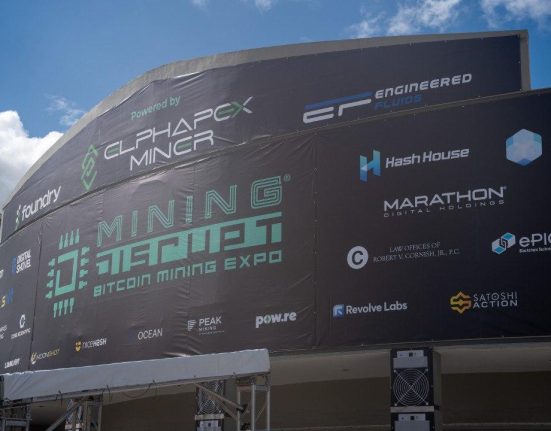Answering the question we’re all too afraid to ask. you’re in any kind of crypto network, it’s impossible to go 10 seconds without hearing about the metaverse. We’re guilty of this too of course — our by-line proudly states that we’re the world’s first AR NFT generator, marketplace and metaverse.
From Meta FKA Facebook through to just about every blockchain game currently in development, ‘metaverse’ has become a seemingly obligatory part of their offerings. But with so many options out there, and so many different projects offering a metaverse, you’d be forgiven for wondering:
What even is the metaverse?
In this article we ask the hard questions and get some (un)surprising answers. We also look at how Hololoot fits into the metaverse and what we’re doing to bring it to an even wider audience than ever before.
What is the ‘metaverse’?
The word ‘metaverse’ broadly refers to shared virtual worlds through which users can interact with others. This could be anything from videogames to virtual chatrooms and includes 3D, VR and AR applications.
While the word ‘metaverse’ might seem like a fresh new buzzword, the concept of the metaverse is far from original. Sci-fi writers have been exploring these concepts for decades, and many of us have already explored metaverses in the past. Games like Second Life and Habbo Hotel, as far as they can be called ‘games’, are metaverses that have been around for decades. Anyone who has spent hours in classic MMOs like World of Warcraft or Runescape have also immersed themselves in a version of a metaverse.
In a post-social-media world, these metaverses are the logical next-step as we approach the sci-fi future we were promised in books and movies. Work meetings, social meetups and our school classes can all feasibly happen in the metaverse, and thanks to developments in AR and VR technology these things are seeming more realistic than ever. This is a big reason why Facebook rebranded to Meta in 2021 — for the social media giant with a vested interest in VR technology, the metaverse is the logical successor to their platform. Facebook 2 isn’t a website: it’s a virtual world.
Are all metaverses linked to NFTs and crypto?
Although it isn’t necessary, many metaverses today are tied in with crypto. Explanations as to why this is the case vary from ‘we’re all nerds’ to ‘NFTs and crypto tokenization enable virtual economies to run identically to real-world ones’, with a synthesis of these arguments offering the most likely explanation.
Metaverses can of course run perfectly well without crypto. The MMOs mentioned before were around when Bitcoin was but a twinkle in Satoshi’s eye, and we’re still unsure what role crypto will play in Facebook’s metaverse– if any at all.
Still, there’s something important about the role of crypto in the future of the metaverse, particularly with corporate giants like Facebook making massive moves in the space. If the metaverse truly is the future, it’s important to look at who will own it. Centralized services like Facebook, which profit from harvesting and selling user data in ethically shady ways, have a lot to gain from plugging us all into their controlled version of the metaverse. However, decentralized metaverses, built on the blockchain and generally opposed to totalitarian data farming practices, offer us a future where end users control the metaverse — not a corporation. This might sound like the plot of Tron, but for many people building in blockchain these are the stakes at play.
The AR metaverse
The metaverse of the future is strongly linked to VR tech in the eyes of many people. It really does seem almost unreal to be able to put on a headset and interact with others as if they were there in front of you.
But there’s a big problem with VR technology: it’s expensive and requires dedicated hardware.
This might not be a problem if you’re a gamer interested in immersive gaming, but for everyone else this kind of metaverse is to far to be imagined. Sure, it would be awesome to have virtual meetings where productivity is increased because it feels like we’re interacting, rather than starting blankly at a Zoom call with our mics on mute — but if we need to pay hundreds of dollars for specialized equipment to do it? Zoom it is.
AR instead offers a strong alternative to the VR metaverse. With more than one billion AR-ready devices already in circulation (i.e. just about any modern smartphone), bringing the metaverse to life through AR is much more achievable. No need for clunky, expensive headwear — just open your phone wherever you are and dive right in.
Why is this differentiation so important?
If you believe we’re in a race to control the metaverse, with the forces of good and evil battling over the future of our data, the speed of adoption matters. If a decentralized service like Hololoot can establish a place in the market quicker than centralized corporations, we have a shot of building a future where users are in control of their data. As well as being a huge boost for our investors, this is also philosophically important.
Hololoot and the AR metaverse
Hololoot is helping spread both NFTs and the metaverse through our AR app. We make it easy to generate and trade AR assets from any compatible 3D model — which means you can bring your virtual avatars to life. While this is a cool nice application for now, we have a long-term vision on what the AR metaverse can accomplish.
Gamers and users from other metaverse titles can import their 3D assets into Hololoot and view them in AR. This is an invaluable marketing tool for those looking to sell valuable NFTs, as well as for those looking to brag to their friends about a rare drop.
Imagine calling friends or family you haven’t spoken to in a long time. Instead of just a voice, you see a 3D digital representation of them on your screen, almost as if they were a holographic projection.
Retailers can create 3D scans of their products and link them to NFTs for sale. Before buying something online, fire up the AR version and inspect yourself. This is already becoming a reality with our partnerships with Uniqly and Jigen and will probably be the norm for e-retail in the very near future.
Hardware integrations will imbed AR applications into the glasses we wear, giving us a virtual overlay on the world around us. Translate and overlay languages in real time; create and explore shared spaces with other AR users; look up information objects you can see with a simple command: it’s all possible with AR glasses. What was promised with Google Glass all those years ago is already being realized by companies like Nreal, so this reality isn’t that far off.
Only a fraction of these things are available today, but at the rate that tech develops most of them will be common within just a few years. As the metaverse grows, we want Hololoot and AR to be words that come to mind when people think about practical solutions.
And we hope we can make Kevin Flynn proud along the way too.
(Disclaimer: – This is a paid press release. BitcoinWorld.co.in does not endorse and is not responsible for or liable for any content, accuracy, quality, advertising, products, or other materials on this page. Readers should do their research before taking any actions related to the company. BitcoinWorld.co.in is not responsible, directly or indirectly, for any damage or loss caused or alleged to be caused by or in connection with the use of or reliance on any content, goods, or services mentioned in this press release.)














